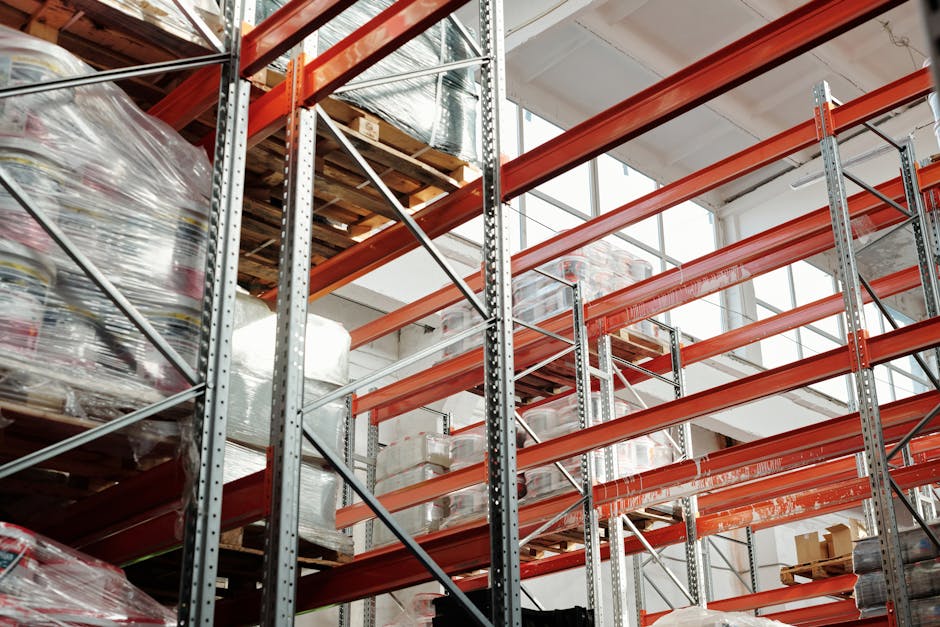Intelligent Order Picking Systems: Enhance Warehouse Efficiency
Picture a warehouse humming with activity. Workers dart between aisles, forklifts beep as they maneuver pallets, and orders are being packed at lightning speed. Now imagine that same warehouse operating with surgical precision, where every product is in the right place, every order is picked with minimal effort, and errors are nearly non-existent. That’s the promise of intelligent order picking systems, a solution redefining how warehouses function.

What Exactly Are Intelligent Order Picking Systems?
At their core, these systems are a combination of software and hardware designed to streamline the process of selecting products for shipment. Think of it as a GPS for your warehouse staff, guiding them to the exact location of an item while considering the most efficient route to get there. But it doesn’t stop at just navigation; these systems often integrate advanced technologies like artificial intelligence (AI), machine learning, and robotics to automate and optimize processes.
Some systems use wearable devices or handheld scanners that communicate with a central database, updating inventory in real-time. Others might employ automated guided vehicles (AGVs) or collaborative robots (affectionately called cobots) to assist human workers by physically retrieving items. The result? A faster, more accurate, and less labor-intensive picking process.
The Nuts and Bolts: How Do These Systems Work?
The magic behind intelligent order picking lies in data. A warehouse management system (WMS) collects information about incoming orders, item locations, and inventory levels. Using this data, the system generates optimized picking paths and assigns tasks to workers or machines.
If two orders contain several overlapping items, they can be picked together to save time.
Amazon has implemented robotic systems in its fulfillment centers that lift entire shelves of products and bring them directly to human workers. This drastically reduces the time spent walking through aisles looking for specific items.
The Real Benefits: Why Should Warehouses Make the Switch?
If you’re managing a warehouse, you might be wondering whether investing in such a system is worth it. Let’s lay out some concrete advantages:
- Speed: With optimized routes and reduced manual effort, orders can be picked much faster than traditional methods. This is especially important for businesses dealing with tight delivery deadlines or high seasonal demand.
- Accuracy: Picking errors can lead to customer dissatisfaction and costly returns. Intelligent systems help minimize mistakes by verifying every step of the process.
- Cost Savings: While there’s an upfront investment involved, these systems can lead to long-term savings by reducing labor costs, improving space utilization, and minimizing waste from incorrect orders.
- Employee Satisfaction: Automating repetitive or physically demanding tasks can make workers' jobs safer and less exhausting. Happier employees often mean higher productivity.
A report from McKinsey & Company highlights that warehouses using automated picking technologies can see productivity gains of up to 50% while significantly lowering error rates. That’s a game-changer for businesses aiming to stay competitive in fast-moving industries like e-commerce or pharmaceuticals.
Tackling Challenges: Is It All Smooth Sailing?
No innovation comes without hurdles, and intelligent order picking systems are no exception. One major concern is cost; implementing such technology requires significant investment in both hardware and software. Smaller businesses may find this barrier intimidating.
Another challenge is integration. If a warehouse already uses legacy systems or outdated infrastructure, upgrading to an intelligent system might require overhauling existing processes entirely, something not every company is prepared for.
Finally, there’s a learning curve involved. Workers need proper training to adapt to new tools and workflows. Skimping on training can lead to frustration and reduced efficiency during the transition phase.
The good news? Many providers offer scalable solutions that allow businesses to start small (Automating just one part of their warehouse) and expand gradually as they see results. Companies like Zebra Technologies zebra.com specialize in modular systems tailored to different operational needs.
The Bigger Picture: What Lies Ahead?
If recent trends are any indication, intelligent order picking is set to become more accessible and advanced. AI-driven analytics are expected to play an even bigger role in forecasting demand patterns and optimizing inventory placement within warehouses. Meanwhile, advancements in robotics promise more affordable solutions for businesses of all sizes.
A practical example comes from Ocado Group ocadogroup.com, a British online supermarket that uses state-of-the-art robotic grids for grocery fulfillment. These robots work collaboratively in a highly choreographed manner to fulfill thousands of orders daily, a model many other companies are studying closely.
Success hinges on finding the right balance between automation and human expertise. Machines excel at repetitive tasks requiring precision and speed but still rely on human decision-making for flexibility and creativity when solving unexpected challenges.
If you’re considering taking your warehouse operations up a notch (or several) exploring intelligent order picking systems could be your next big move. Whether starting small with handheld devices or diving into full-scale robotics integration, these solutions offer exciting opportunities to revolutionize how goods flow from shelves to customers’ hands.
